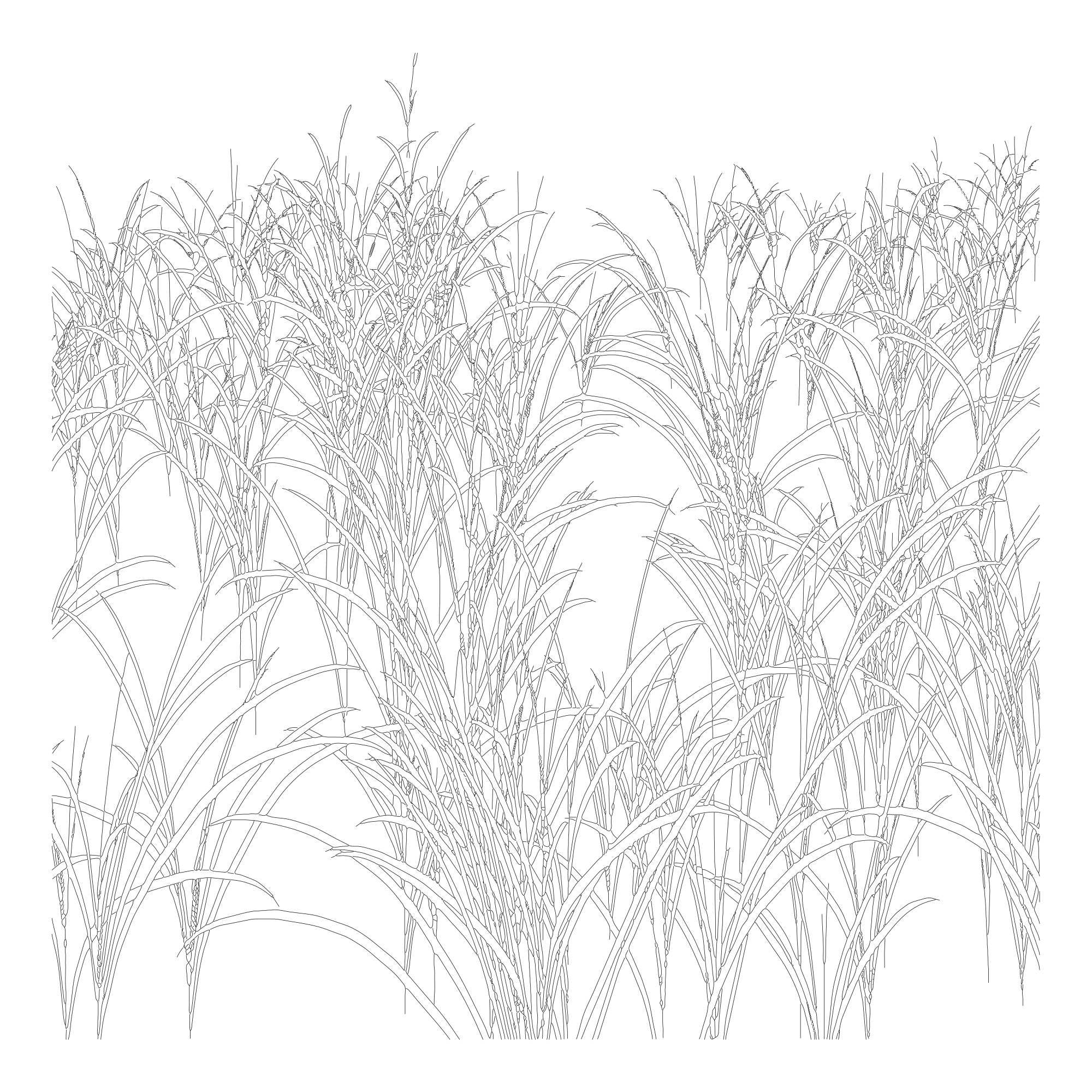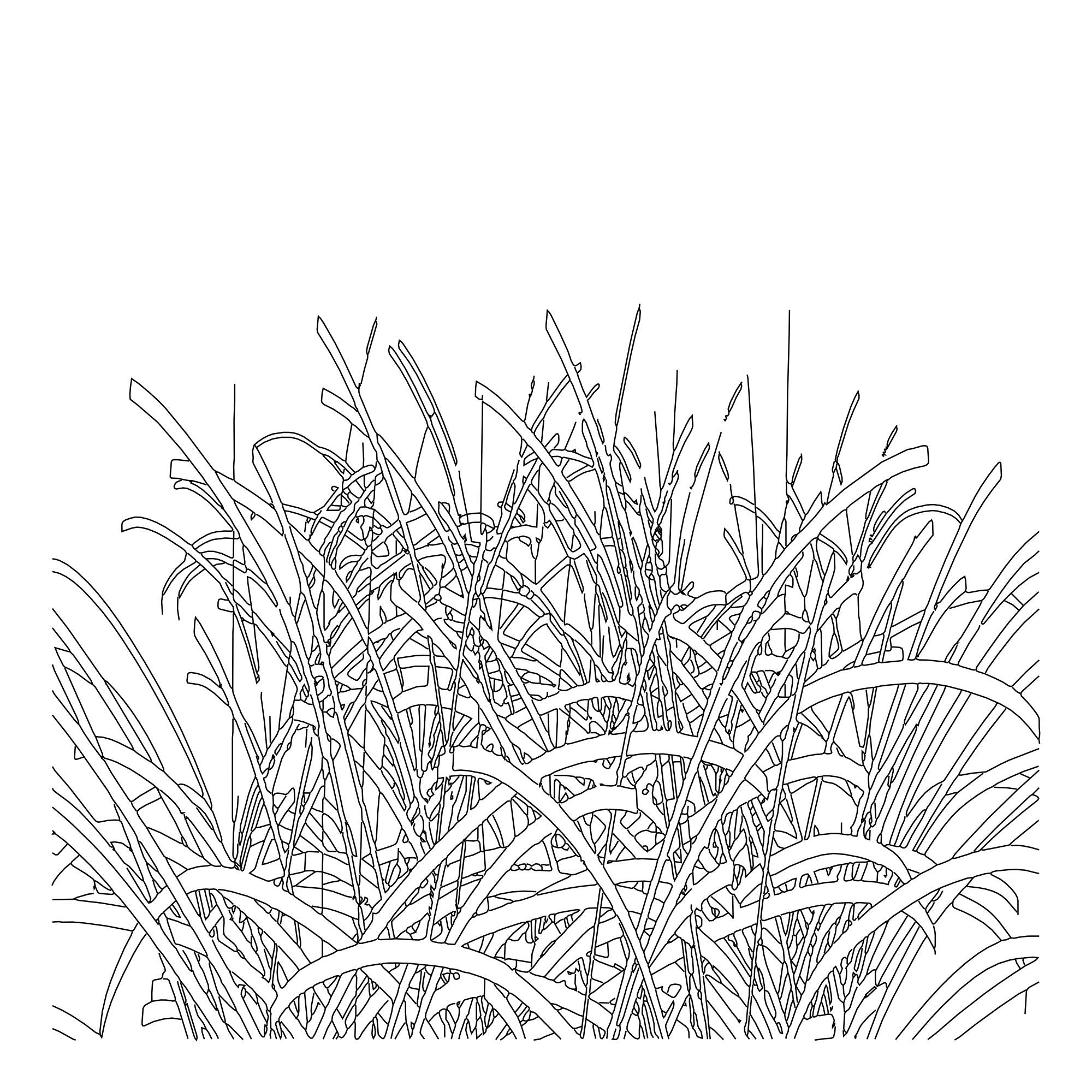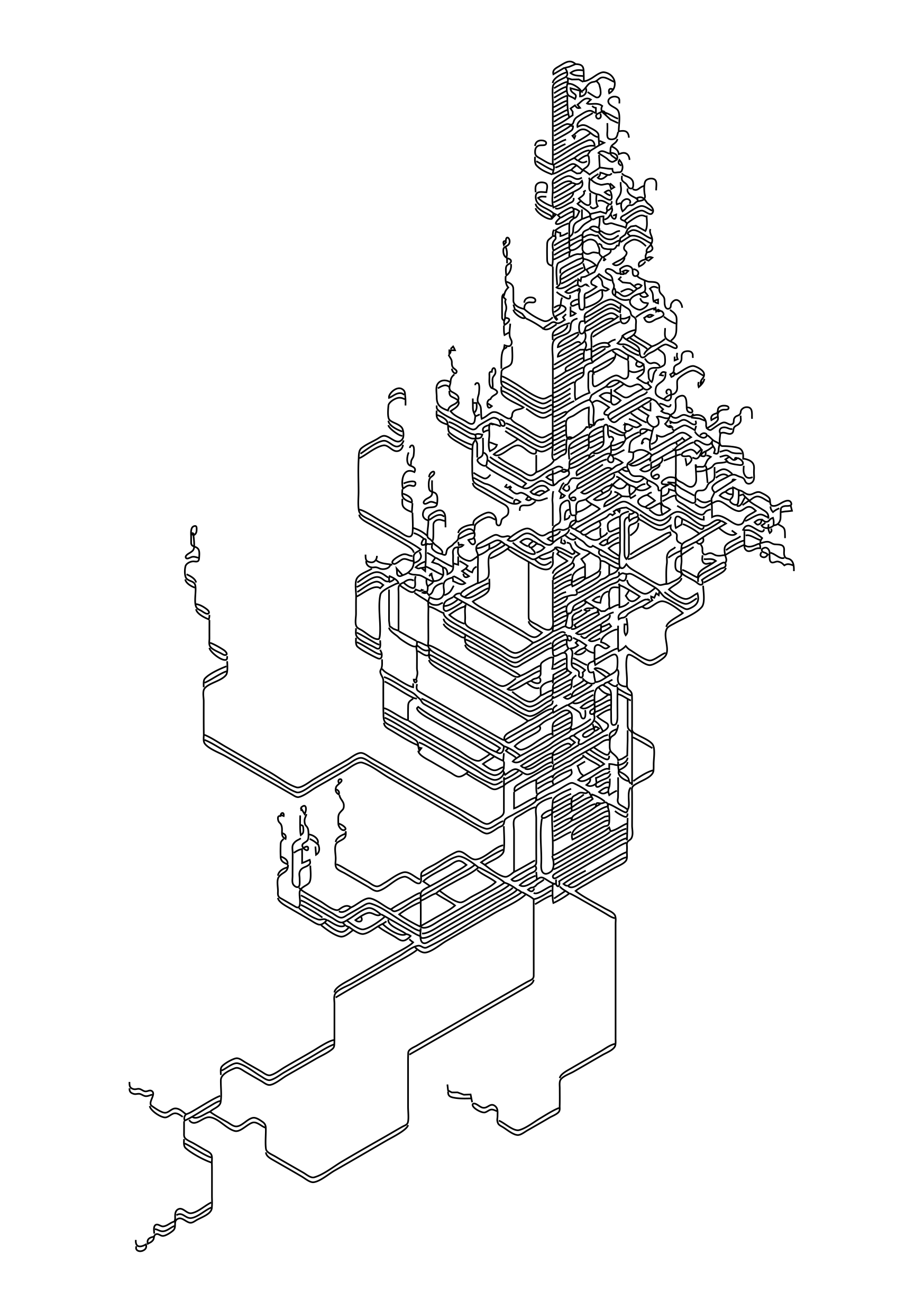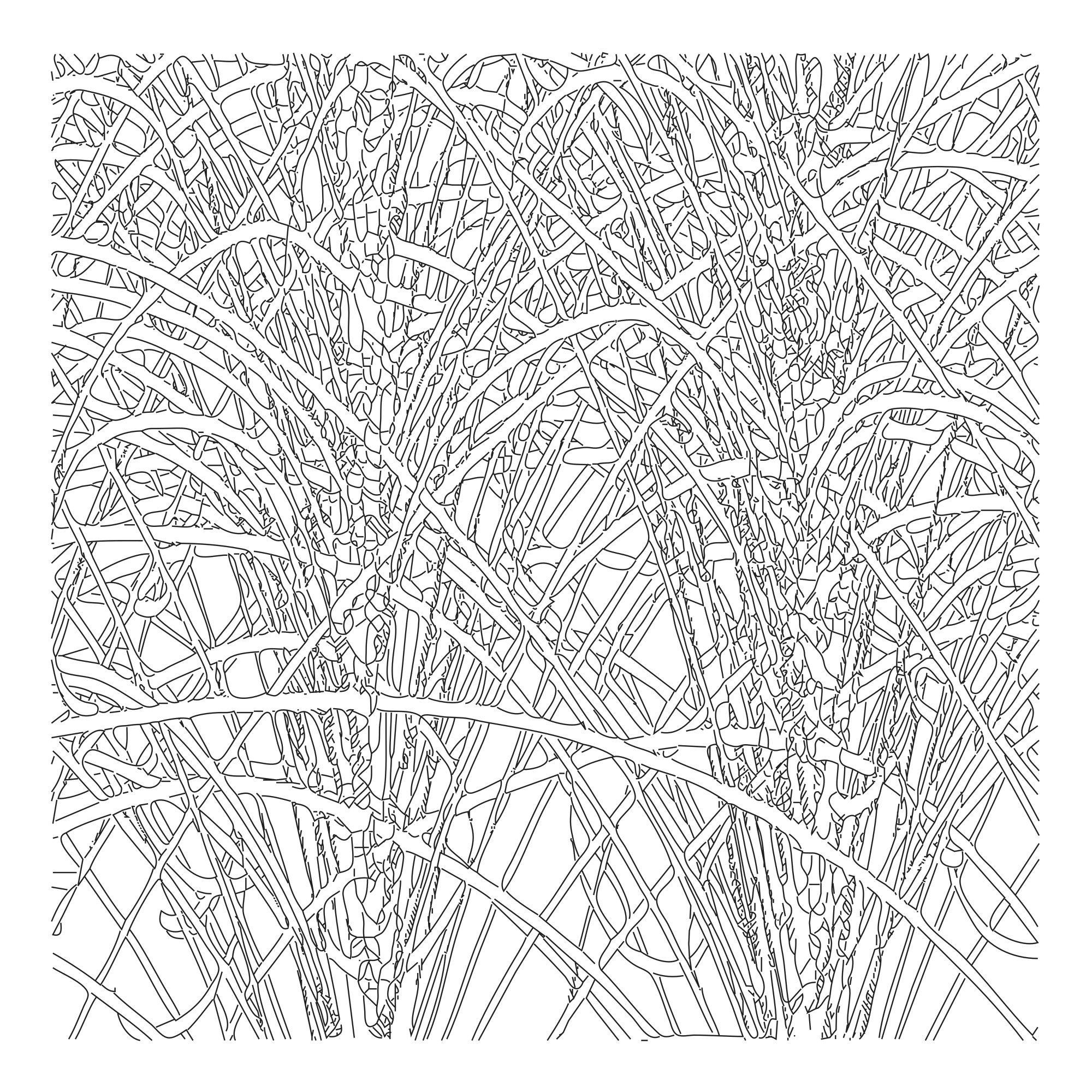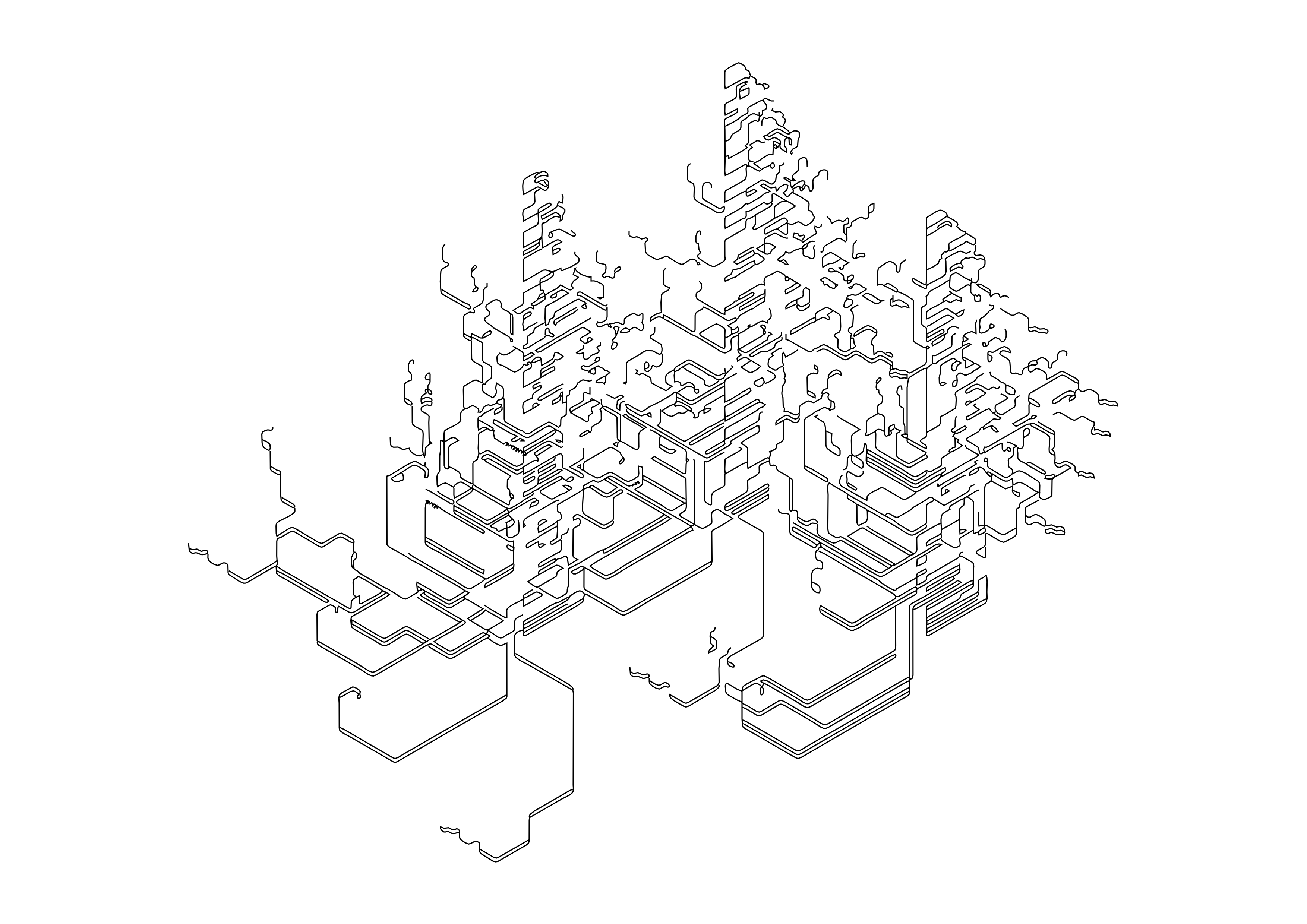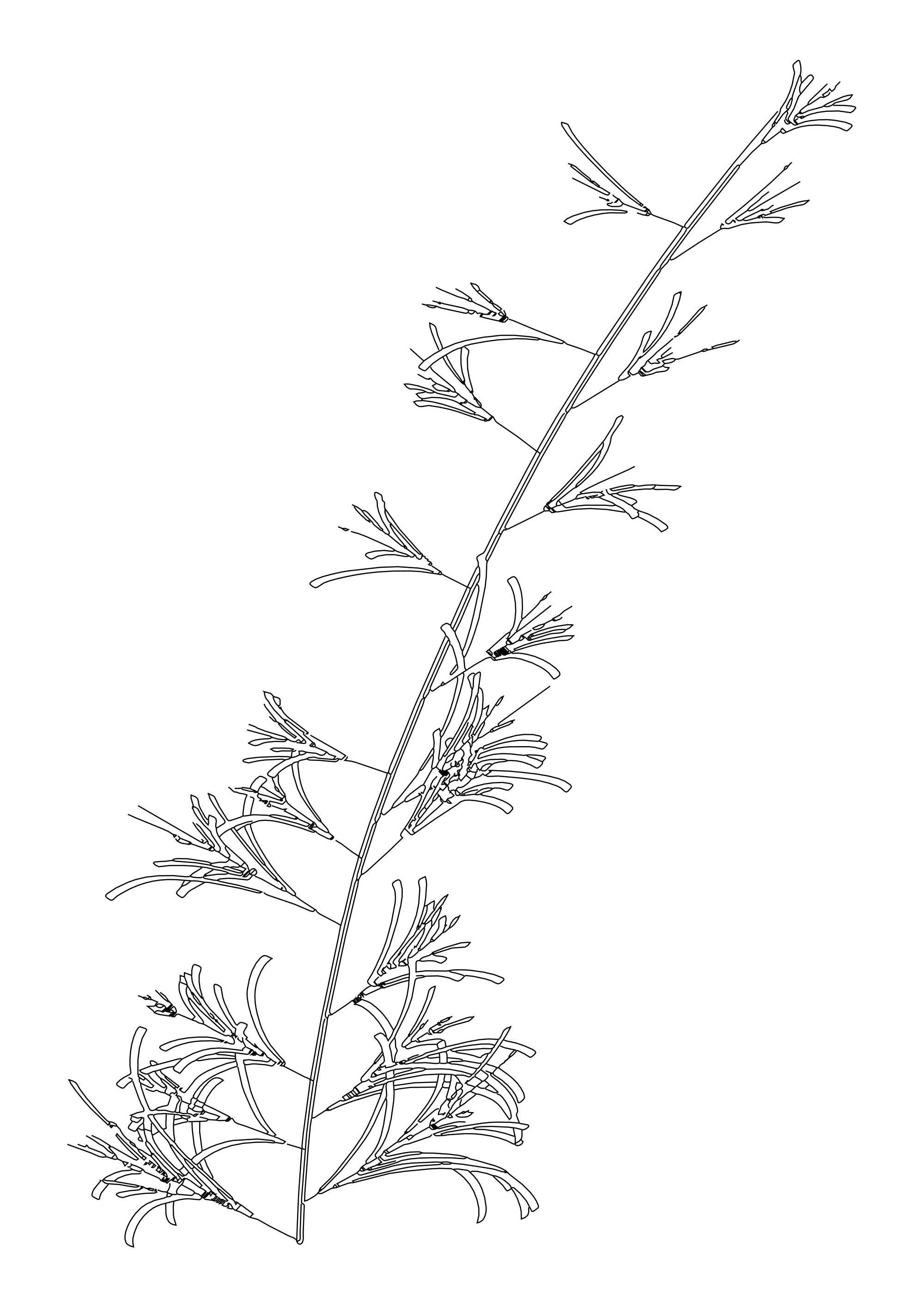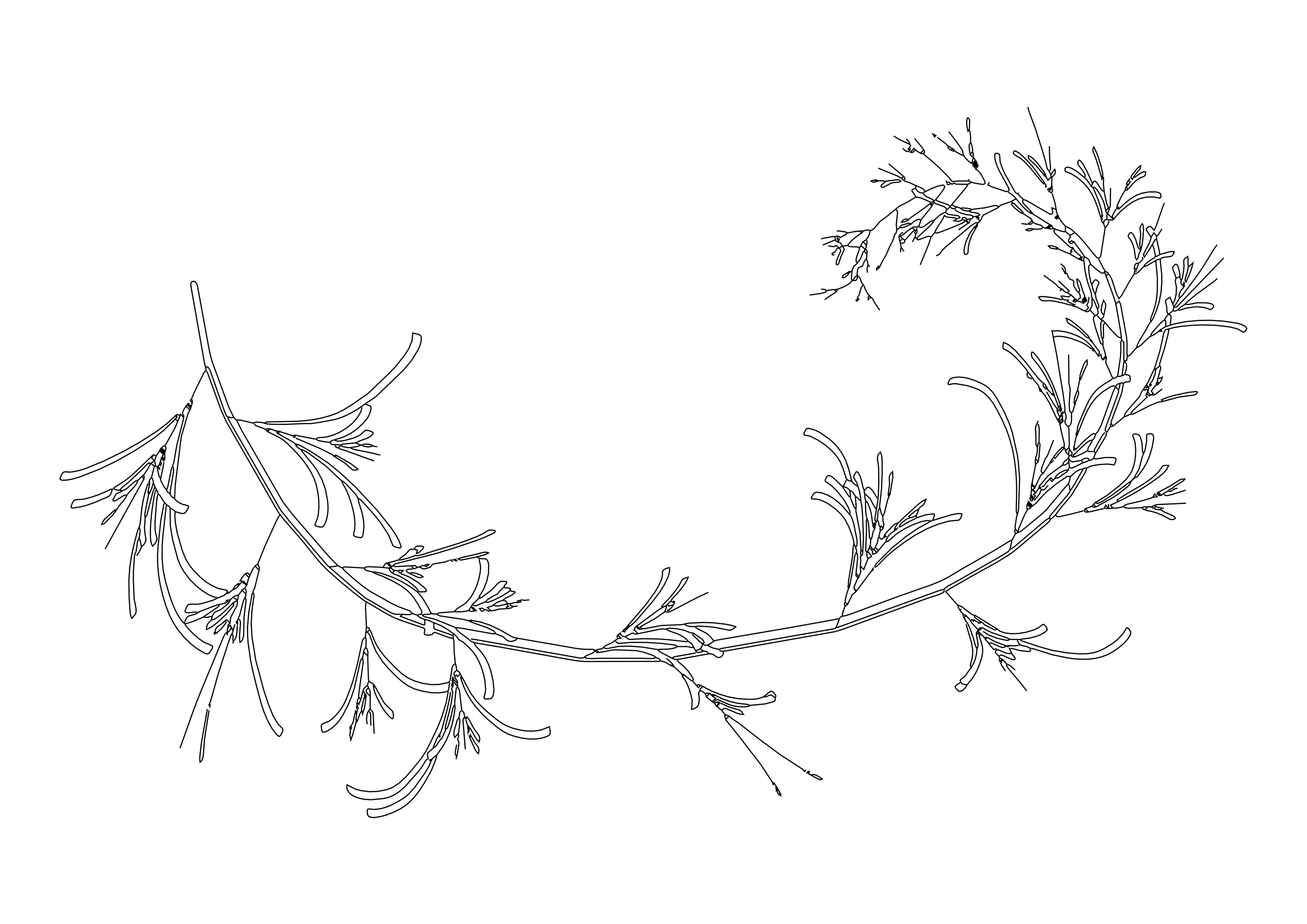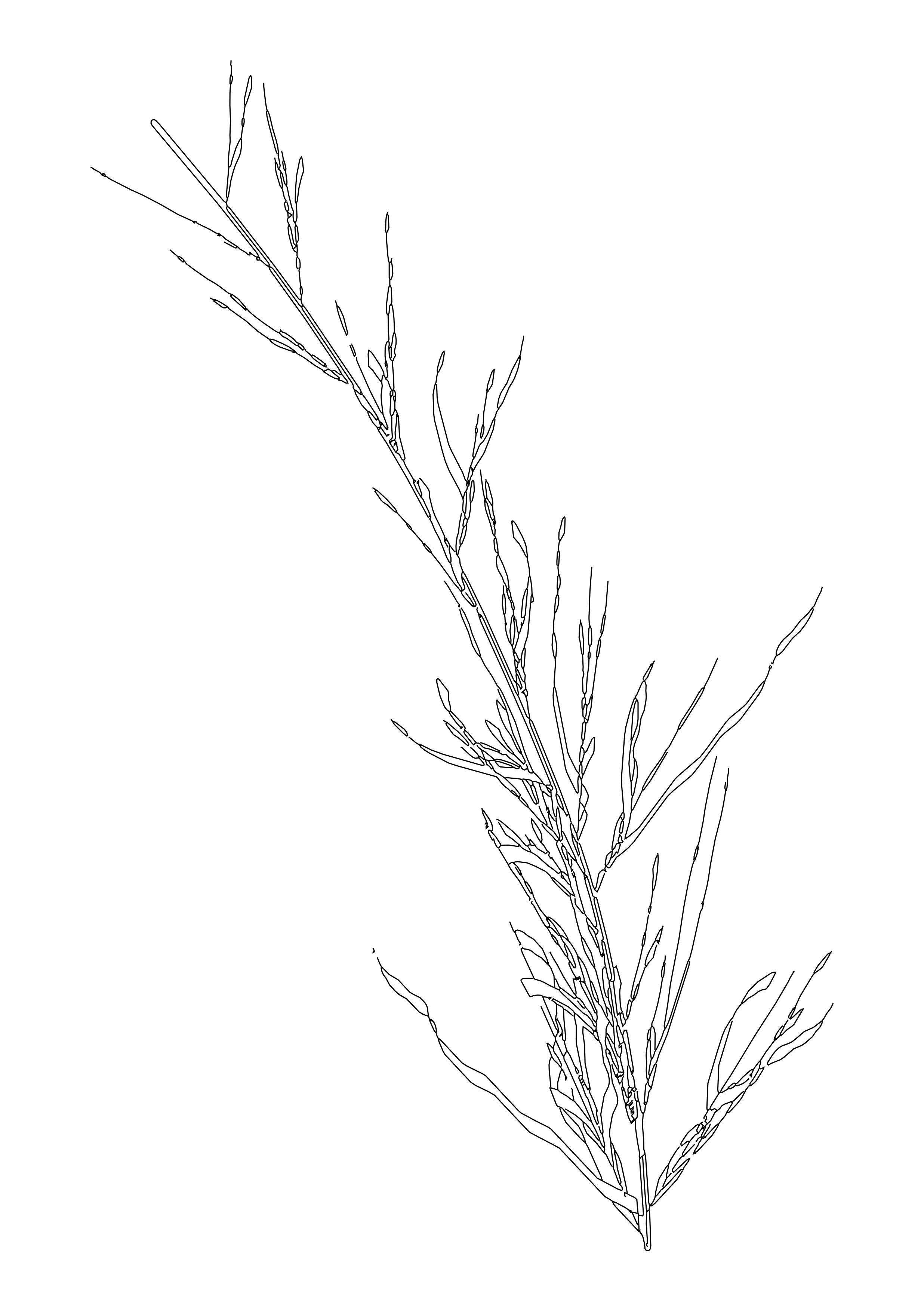Curves parameterized from integer sequences and positioned according to basic botanical rules.
This system focuses on a very simple generator, here a sequence of numbers generated from a set of rules. In this case, I used the Collatz sequence because it has a decreasing, random-looking pattern, which is a nice feature for plant structures (e.g. the internode distribution on a stem).
This sequence is used to define a curve, by mapping sequence elements to segment length, with a random angle between segments. Multiple curves are computed to constitute a node, and multiple nodes to constitute a stem / individual. Further recursion can be used to create populations of multiple individuals, with random or community-dependent features.
The main random elements are the initial value of the sequence, and the angle distribution between curve segments.
I explained this approach a bit more in details during a talk at an art show, slides are available here.
On this series, rather than properly computing hidden line or polygons, I used an external algorithm (bitmap tracing) which had the nice side-effect of reshaping and merging some paths.
